After a spacious family SUV with a posh badge? The BMW X3 and Audi Q5 are both great choices.
Competition between Germany's premium brands has always been fierce, and the swords are especially sharp here because this is an extremely profitable segment. That means both cars need their game faces on.
We've driven both to help you pick a winner. Once you've chosen, check out used BMW X3 and used Audi Q5 cars for sale from Motorpoint with thousands off their list prices.
BMW X3 vs Audi Q5 compared
| BMW X3 | Audi Q5 |
Pros:
| Pros:
|
Cons:
| Cons:
|
Styling and design
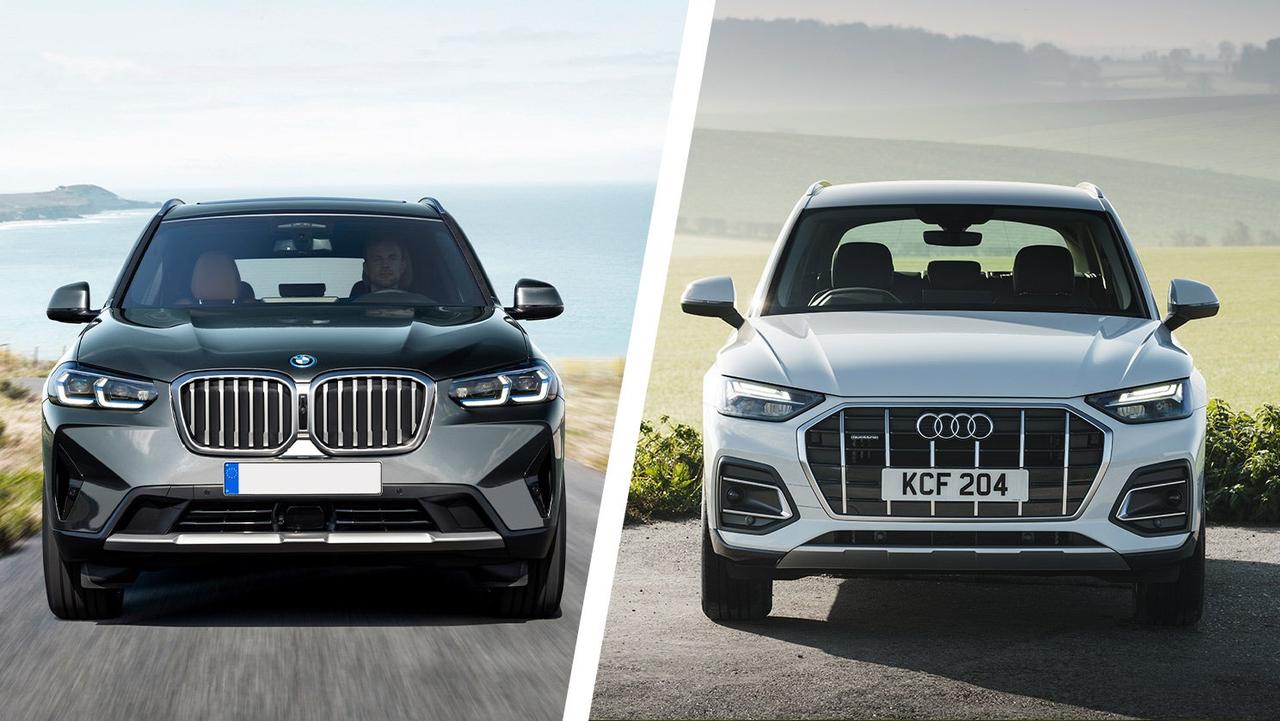
Keep reading and you'll find the X3 and Q5 match each other almost step for step, leaving the exterior styling as one of the more meaningful differentiators between the two. You probably already know which you prefer but, for our money, we think the Audi's suit is a touch sharper than the BMW's. The X3 unmistakably hails from a Bavarian family tree, with signature kidney grilles and twin-element headlights, but its bodywork could easily be mistaken for a BMW X1 or BMW X5, just viewed at slightly different distances.
You could reasonably accuse the Q5 of a similar crime – looking a little too much like either the Audi Q3 or Audi Q7 – but its overall shape, to us, is a spot more attractive. Audi's distinctive, upright hexagonal family grille and slim, sharp headlights lend the Q5 an imposing presence, while the creased and kinked bodywork gives it a more athletic profile compared to the X3. Facelift Q5 models also benefit from a strip of chrome between the brake lights, which gives the rear a bit more pizzazz.
Interior and practicality
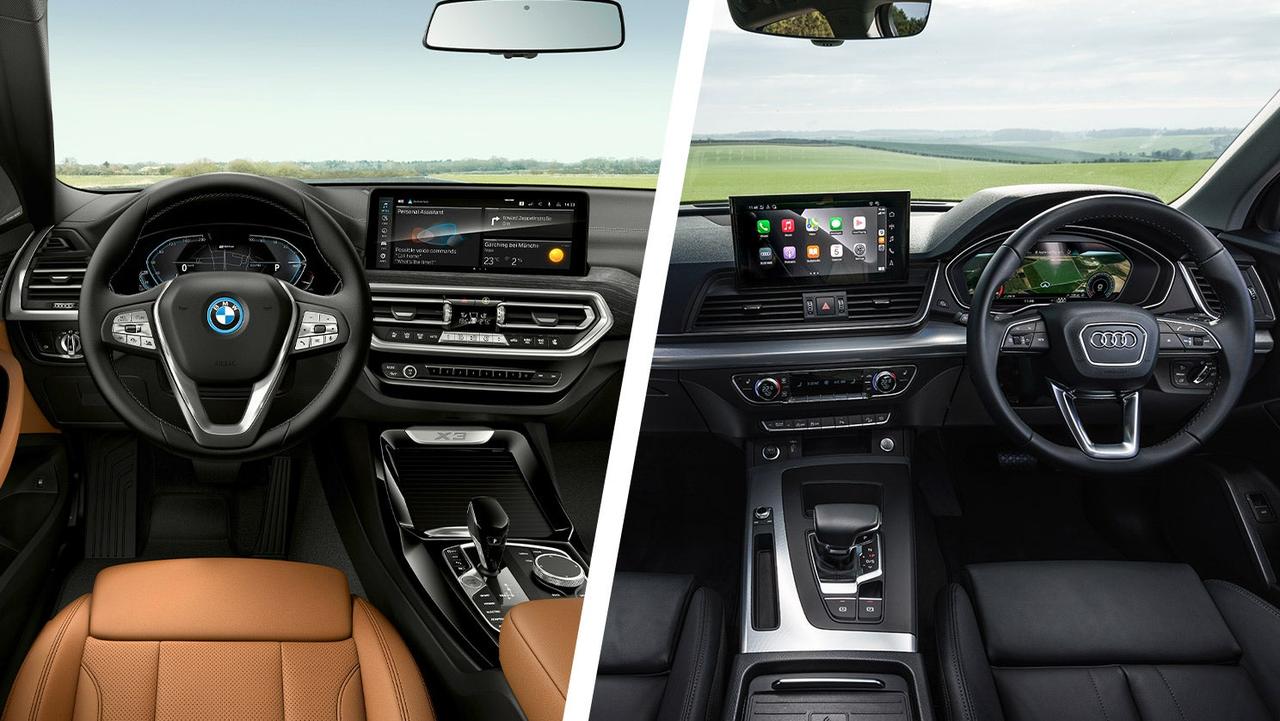
If the X3 and Q5 were schoolchildren, you'd have to separate them because they're definitely copying each other's homework! The cabin layout for both cars is remarkably similar, with a digital screen for the driver's dials, a dash-top mounted infotainment screen, and physical controls below that for the stereo, climate and driving modes. If we split hairs, the X3's centre console controls are a little more fully featured, but we slightly prefer the piano-style keys for the Q5's climate control system and its elegant thin-rimmed steering wheel.
There are pros and cons to both cars' infotainment setups. In the X3, we like that it's retained a physical rotary controller in the centre console with shortcut buttons around it. This makes it easy for the driver to change infotainment settings without taking their eyes off the road as much as the Audi's purely touchscreen-based system. Both cars were facelifted in 2021, gaining larger infotainment screens but the BMW's has an oddly short and wide aspect ratio, which can make some on-screen menus seem a little cramped – the Audi's squarer screen means this is less of an issue.
Buyers in this segment expect excellent practicality and neither car fails in this regard. Both have lots of head and legroom for tall passengers across the first and second rows. Fill all five seats and rear passengers will be bumping elbows slightly, but they'll have a fraction more shoulder room in the Q5 – although you'd probably only notice when armed with a tape measure. Boot space stands at 550 litres for both models – plenty for family buyers – but the opening on the X3 is a little more upright, making it a touch easier to load tall, awkwardly shaped items. Some Q5s are optionally available with a sliding rear row, eking out a little more space without needing to fold the seats down.
Engines and performance
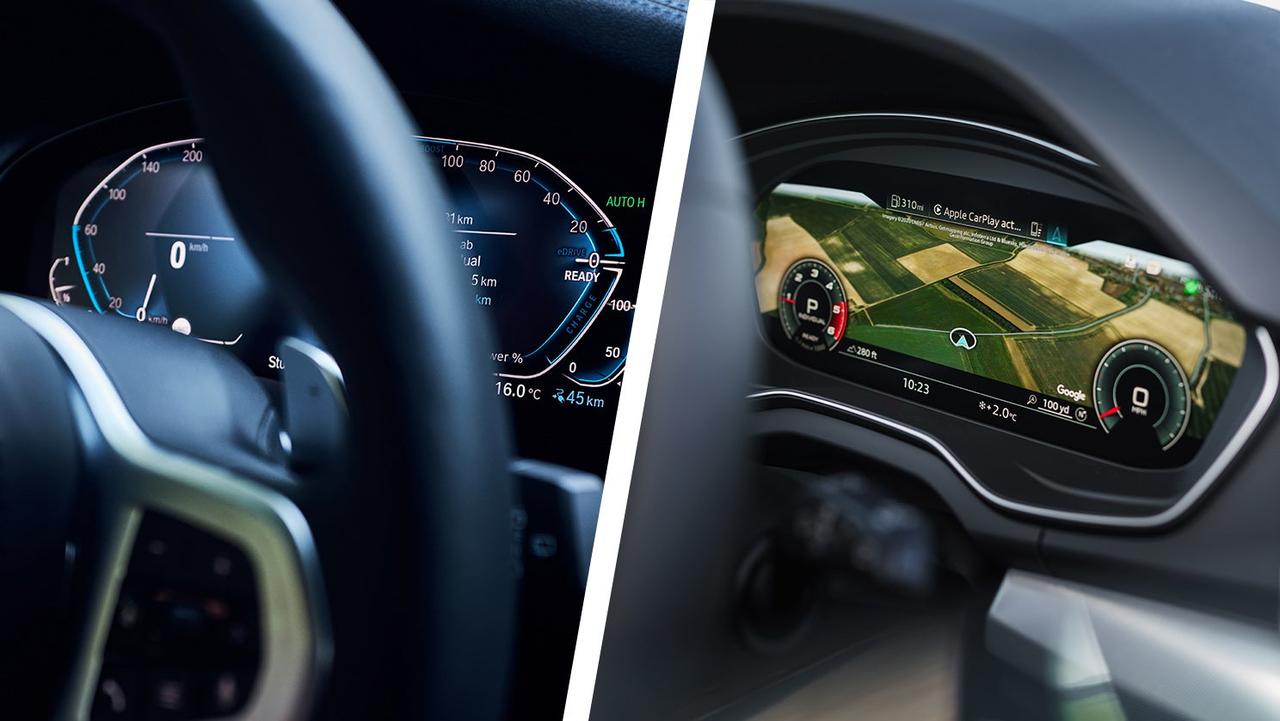
For both cars, the entry-level 2.0-litre engines are the most common choices on the used market, with many buyers opting for diesel power, too. Thankfully, in both cases – the X3 xDrive 20d and Q5 40 TDI – these are probably the picks of the range for most drivers. You get plenty of low-end punch to get these hefty cars up to speed without the harder revving needed by equivalent petrol engines to achieve the same performance. Automatic gearboxes are standard on both cars, delivering a smooth driving experience that suits their upmarket image. Four-wheel drive is also standard, so you get a little better all-weather performance, especially if you fit a set of winter tyres.
On paper, the Q5 tends to be a few tenths faster than the X3 when comparing like-for-like engines – not least because the Audi's popular 2.0-litre diesel now makes 204hp to the equivalent BMW's 190hp. Drive them back-to-back on the road and you'll be able to tell the Audi is a hair quicker but, once you're looking at that level of detail, you'll also spot differences like the BMW's automatic gearbox being a fraction more smooth. In practice, both cars deliver reassuring, fuss-free performance.
Higher up the range, you'll find plug-in-hybrid engines, which offer a few dozen miles of electric-only running before their petrol engines kick in. For both cars, these setups deliver strong acceleration or astronomical mpg figures if you remember to recharge their batteries often. However, for the most performance, you'll probably lean towards the BMW – it offers M40i and M40d petrol and diesel versions to rival the impressively swift Audi SQ5, but it also includes the pricey, full-fat X3M with more than 500hp, if you want to battle supercars in your family SUV.
Driving
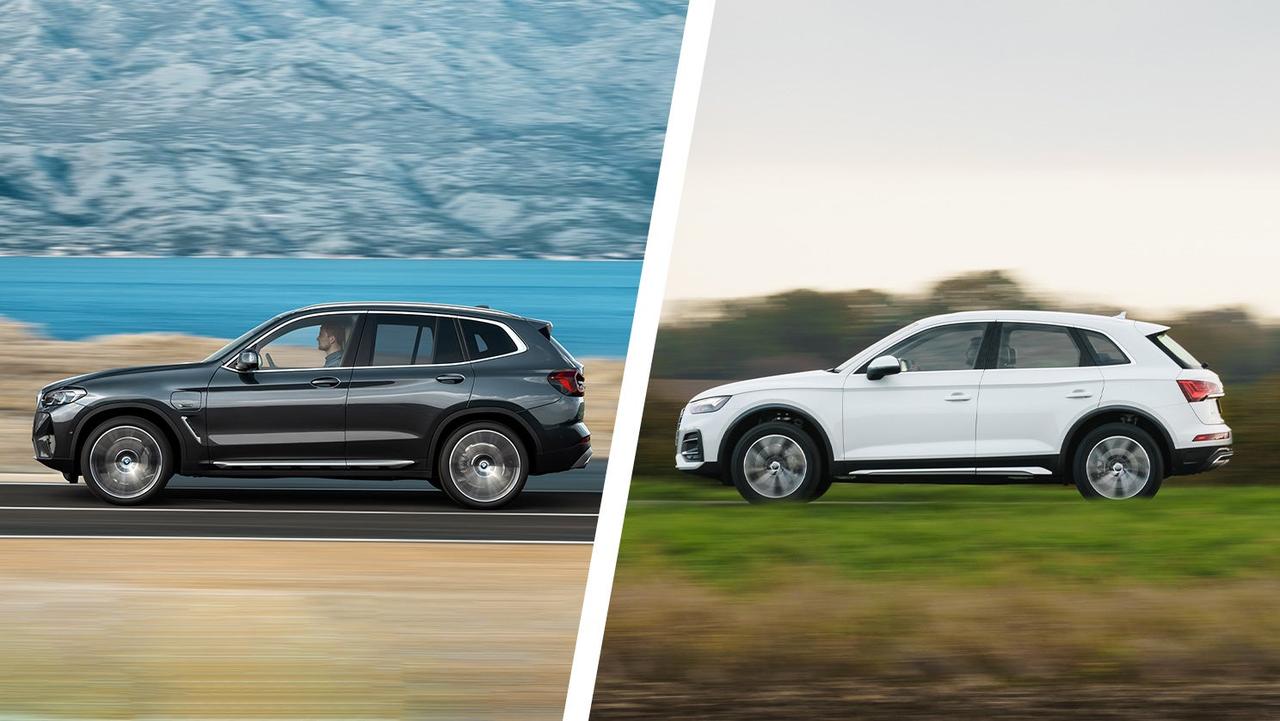
While straight-line performance yields no obvious winner, there's a clearer distinction when the road gets twisty. The X3 is uncommonly agile for such a tall, heavy car with the kind of accurate front end you'd expect from a well-sorted sports saloon. Body control is fantastic, with minimal leaning through corners and rock-like stability over uneven surfaces. None of that compromises the ride quality, however, which has more give than BMW's road cars thanks to the taller suspension, making the X3 both easy to spend time in and easy to control. Refinement is strong, too, with almost no engine noise to speak of and only a hint of wind whistle at high speeds.
The Q5 is an accomplished all-rounder and is unlikely to upset anyone – it's just that the X3 is such a star on the road, most rivals end up second-best. Despite this, the controls are accurate, and you don't find yourself jabbing the accelerator waiting for the engine and gearbox to wake up. It has a similar sense of composure as the X3, which makes the Q5 easy and predictable over unfamiliar roads, and the compliant suspension means passengers won't be complaining of travel sickness. S Line-trimmed Q5s avoid the overly firm setup found in certain Audi S Line cars, although we suspect Sport models will ride a touch softer on their smaller alloy wheels.
Value and reliability
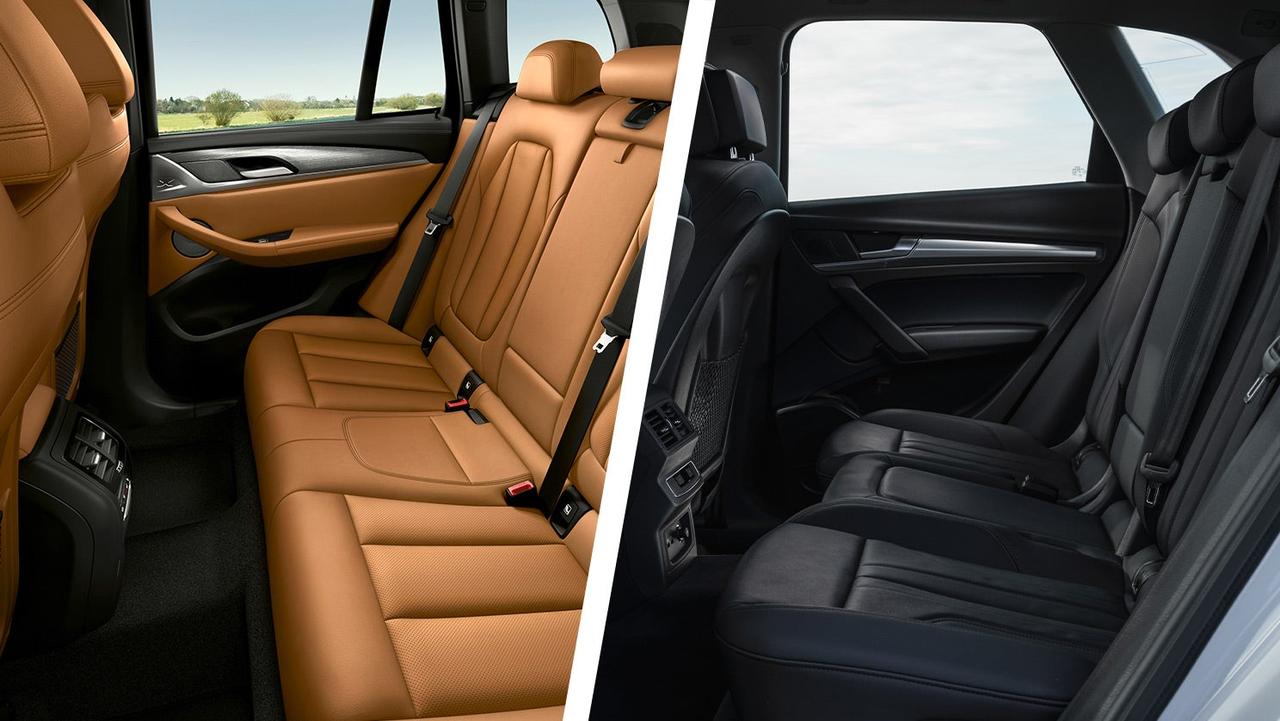
Prices for these two cars on the used market are essentially the same. Bigger swings will be caused by the relative age and mileage of the particular model you're looking at, rather than which brand's badge sits on the nose. That means there isn't really a value-for-money argument to be made one way or the other between these two, so your wallet needn't be a factor in your decision.
We don't anticipate either car throwing up many reliability issues, especially if you keep on top of scheduled maintenance. Make sure, however, if you're buying one of the popular diesel-powered versions, that you take occasional longer motorway journeys to avoid DPF clogging issues. Parts and engines on both cars are widely used on other models from each brand's lineup, so replacements shouldn't be too hard to source.
To banish your reliability worries, consider buying an extended warranty with either car when you come to purchase it. This protects you from the cost of unexpected mechanical or electrical failures during the coverage period.
Which is best?
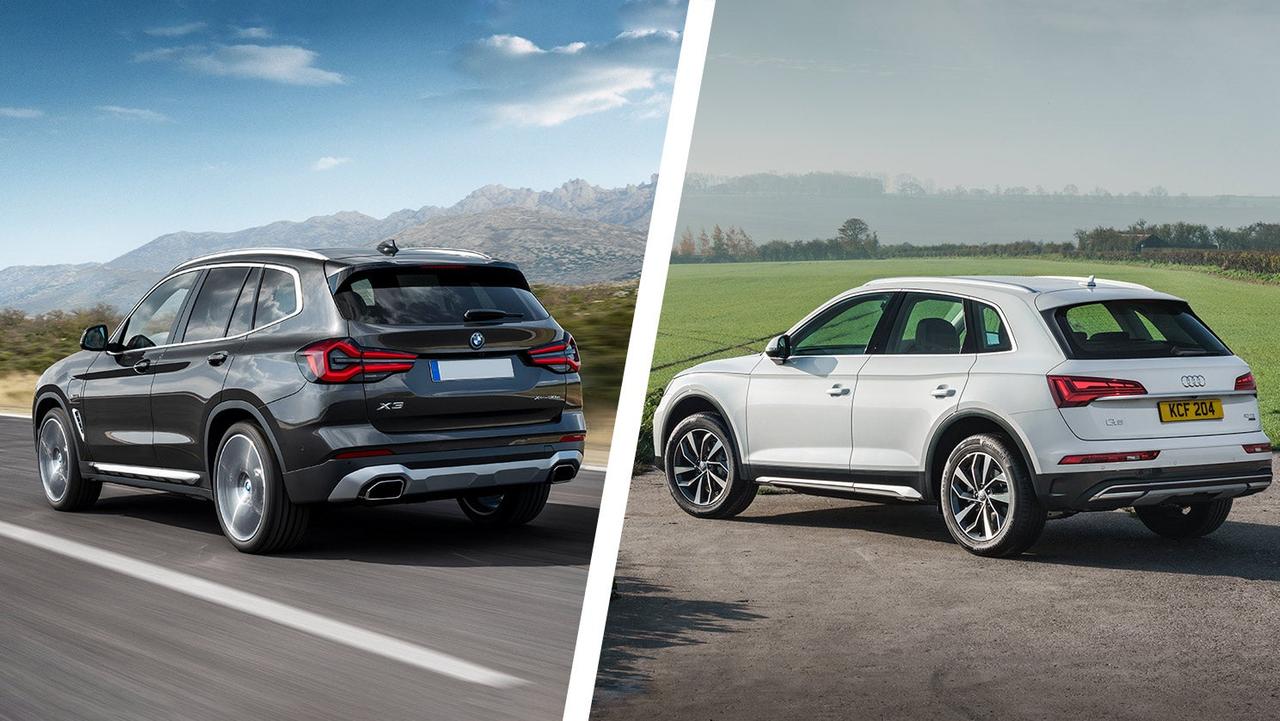
BMW and Audi have spent so many years locked in competition that differences between the X3 and Q5 are measured in fractions rather than miles. Both are easy to drive and easy to own, with smooth, effortless performance and plenty of space for families. If you prefer the look of one over the other, you're unlikely to be disappointed once you've got one in your parking space.
That said, buyers who end up in an X3 are likely to enjoy its accomplished driving experience, along with the fact passers by might think you're in an X5 that costs twenty grand more! Those who pick the Q5 will probably do so because they prefer its more chiselled looks and slicker infotainment screen.
Browse used BMW X3 and used Audi Q5 cars for sale at Motorpoint – or find out how the X3 compares to its other key German rival in our Mercedes GLC vs BMW X3 comparison. Read our full BMW X3 review for our full, in-depth verdict.



































